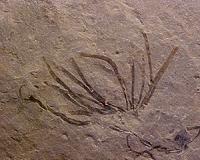| . |  |
. |
Wellington, New Zealand (UPI) Feb 4, 2011 New Zealand researchers say the local extinction of two bird species a century ago is linked to the present decline of a common forest shrub. Scientist at the University of Canterbury say the disappearance of two pollinating birds -- the bellbird and stitchbird -- from the upper North Island of the country has led to a slow decline in common plants including the New Zealand gloxinia in what they say is rare experimental proof of a breakdown in a local ecosystem, the BBC reported Friday. Gloxinia, a shade-growing forest shrub about 6 feet tall and producing an orange tubular flower, depends on three birds for pollination: the bellbird, stitchbird and the tui. Bellbirds and stitchbirds vanished from the upper North Island in the late 19th century, killed off by rats brought in by ships or by stoats introduced to control the local rabbit population, researchers say. The researchers compared the situation on the mainland with that of three nearby island bird sanctuaries where the birds remain abundant, finding pollination rates were vastly reduced on the mainland with seed production 84 percent lower compared with the islands. "This plant is in trouble but it's a slow-motion disaster," researcher Dave Kelly says. "It hasn't been well pollinated for about the last 140 years -- that's about when these birds disappeared off the North Island." "In that time there haven't been enough seedlings coming through and so the plant is quietly crumbling away, fading away," he says. Stephen Hopper, director of the Kew Royal Botanic Gardens in London, described the study as an "elegant" piece of research that "highlights the cascading effects of extinction."
Share This Article With Planet Earth
Related Links Darwin Today At TerraDaily.com
 Putting The Dead To Work For Conservation Biology
Putting The Dead To Work For Conservation BiologyIthaca NY (SPX) Jan 21, 2011 Conservation paleobiologists-scientists who use the fossil record to understand the evolutionary and ecological responses of present-day species to changes in their environment - are putting the dead to work. A new review of the research in this emerging field provides examples of how the fossil record can help assess environmental impact, predict which species will be most vulnerable to e ... read more |
|
| The content herein, unless otherwise known to be public domain, are Copyright 1995-2010 - SpaceDaily. AFP and UPI Wire Stories are copyright Agence France-Presse and United Press International. ESA Portal Reports are copyright European Space Agency. All NASA sourced material is public domain. Additional copyrights may apply in whole or part to other bona fide parties. Advertising does not imply endorsement,agreement or approval of any opinions, statements or information provided by SpaceDaily on any Web page published or hosted by SpaceDaily. Privacy Statement |